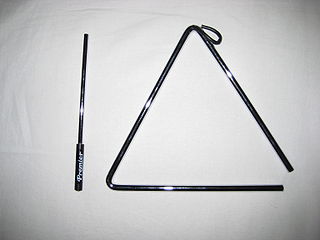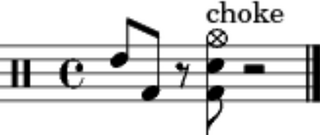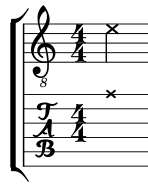
Music is the arrangement of sound to create some combination of form, harmony, melody, rhythm, or otherwise expressive content. Music is generally agreed to be a cultural universal that is present in all human societies. Definitions of music vary widely in substance and approach. While scholars agree that music is defined by a small number of specific elements, there is no consensus as to what these necessary elements are. Music is often characterized as a highly versatile medium for expressing human creativity. Diverse activities are involved in the creation of music, and are often divided into categories of composition, improvisation, and performance. Music may be performed using a wide variety of musical instruments, including the human voice. It can also be composed, sequenced, or otherwise produced to be indirectly played mechanically or electronically, such as via a music box, barrel organ, or digital audio workstation software on a computer.

In music, there are two common meanings for tuning:

The tambourine is a musical instrument in the percussion family consisting of a frame, often of wood or plastic, with pairs of small metal jingles, called "zills". Classically the term tambourine denotes an instrument with a drumhead, though some variants may not have a head. Tambourines are often used with regular percussion sets. They can be mounted, for example on a stand as part of a drum kit, or they can be held in the hand and played by tapping, hitting, or shaking the instrument.

Musical composition can refer to an original piece or work of music, either vocal or instrumental, the structure of a musical piece or to the process of creating or writing a new piece of music. People who create new compositions are called composers. Composers of primarily songs are usually called songwriters; with songs, the person who writes lyrics for a song is the lyricist. In many cultures, including Western classical music, the act of composing typically includes the creation of music notation, such as a sheet music "score", which is then performed by the composer or by other musicians. In popular music and traditional music, songwriting may involve the creation of a basic outline of the song, called the lead sheet, which sets out the melody, lyrics and chord progression. In classical music, orchestration is typically done by the composer, but in musical theatre and in pop music, songwriters may hire an arranger to do the orchestration. In some cases, a pop or traditional songwriter may not use written notation at all and instead compose the song in their mind and then play, sing or record it from memory. In jazz and popular music, notable sound recordings by influential performers are given the weight that written or printed scores play in classical music.

A clef is a musical symbol used to indicate which notes are represented by the lines and spaces on a musical staff. Placing a clef on a staff assigns a particular pitch to one of the five lines or four spaces, which defines the pitches on the remaining lines and spaces.

A membranophone is any musical instrument which produces sound primarily by way of a vibrating stretched membrane. It is one of the four main divisions of instruments in the original Hornbostel-Sachs scheme of musical instrument classification.

The triangle is a musical instrument in the percussion family, classified as an idiophone in the Hornbostel-Sachs classification system. Triangles are made from a variety of metals including aluminum, beryllium copper, brass, bronze, iron, and steel. The metal is bent into a triangular shape with one open end. The instrument is usually held by a loop of some form of thread or wire at the top curve, to enable the triangle to vibrate and it is struck with a metal rod called a "beater". The triangle theoretically has indefinite pitch, and produces a plurality of overtones when struck with an appropriate beater.

Carnatic music or Karnataka Sangita is a system of music commonly associated with South India, including the modern Indian states of Andhra Pradesh, Karnataka, Kerala, Tamil Nadu and portions of east and south Telangana and southern Odisha.
In music, the dynamics of a piece are the variation in loudness between notes or phrases. Dynamics are indicated by specific musical notation, often in some detail. However, dynamics markings require interpretation by the performer depending on the musical context: a specific marking may correspond to a different volume between pieces or even sections of one piece. The execution of dynamics also extends beyond loudness to include changes in timbre and sometimes tempo rubato.

Beatboxing is a form of vocal percussion primarily involving the art of mimicking drum machines, using one's mouth, lips, tongue, and voice. It may also involve vocal imitation of turntablism, and other musical instruments. Beatboxing today is connected with hip-hop culture, often referred to as "the fifth element" of hip-hop, although it is not limited to hip-hop music. The term "beatboxing" is sometimes used to refer to vocal percussion in general.

Tan Dun is a Chinese-born American composer and conductor. A leading figure of contemporary classical music, he draws from a variety of Western and Chinese influences, a dichotomy which has shaped much of his life and music. Having collaborated with leading orchestras around the world, Tan is the recipient of numerous awards, including a Grawemeyer Award for his opera Marco Polo (1996) and both an Academy Award and Grammy Award for his film score in Ang Lee's Crouching Tiger, Hidden Dragon (2000). His oeuvre as a whole includes operas, orchestral, vocal, chamber, solo and film scores, as well as genres that Tan terms "organic music" and "music ritual."

A rhythm section is a group of musicians within a music ensemble or band that provides the underlying rhythm, harmony and pulse of the accompaniment, providing a rhythmic and harmonic reference and "beat" for the rest of the band. The rhythm section is often contrasted with the roles of other musicians in the band, such as the lead guitarist or lead vocals whose primary job is to carry the melody.

Zills or zils, also called finger cymbals, are small metallic cymbals used in belly dancing and similar performances. They are called sāgāt in Egypt. They are similar to Tibetan tingsha bells. In Western music, several pairs can be set in a frame to make a tambourine.
A rimshot is a percussion technique used to produce an accented snare drum backbeat. The sound is produced by simultaneously hitting the rim and head of the drum with a drum stick.

A sting is a short drum sequence played by a drummer to punctuate a joke, especially an obvious one. A sting is often used as accompaniment during cabaret- and circus-style shows. Sometimes the sound of the sting is written ba dum tsh, ba-dum cha, ba-dum ching, ba dum tiss and occasionally ba dum tis. In British English, boom boom is used, for example in "Ha ha ha! Boom! Boom!", the catchphrase of the children's television character, Basil Brush. An abbreviation used in chats is //*. When a full orchestra flourish is to be indicated as a sting, it sometimes is written or spoken as, ta da! or ta da— as an interjection.
A clapper is a basic form of percussion instrument. It consists of two long solid pieces that are struck together producing sound. They exist in many forms in many different cultures around the world. Clappers can take a number of forms and be made of a wide variety of material. Wood is most common, but metal and ivory have also been used. The plastic thundersticks that have recently come to be popular at sporting events can be considered a form of inflated plastic clapper.

In music, notably in jazz, a ghost note is a musical note with a rhythmic value, but no discernible pitch when played. In musical notation, this is represented by an "X" for a note head instead of an oval, or parentheses around the note head. It should not be confused with the X-shaped notation that raises a note to a double sharp.

The Wolverine (Original Motion Picture Soundtrack) is the soundtrack album to the 2013 superhero film of the same name, directed by James Mangold. Featuring the Marvel Comics character Wolverine, the film is the sixth installment in the X-Men film series, the second installment in the trilogy of Wolverine films after X-Men Origins: Wolverine (2009), and a spin-off/sequel to X-Men: The Last Stand (2006). The film's musical score is composed by Marco Beltrami, who previously scored Mangold's 3:10 to Yuma (2007).
Dun dun duuun! is a short three-chord musical phrase, or "sting", widely used in movies and television to indicate a moment of suspense. In modern productions it is often used as a joke effect or to invoke a nostalgic feeling. There are three main variations of the sting, all considered to be the same effect.














